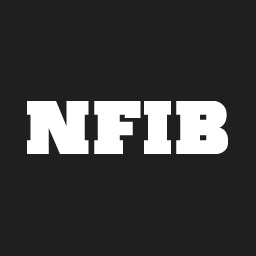NASHVILLE – The NFIB Research Center released its latest COVID-19 survey on the impact the pandemic has had on small businesses. This survey is NFIB’s 17th survey in the series. Included in this edition is an update on small business SBA programs, paid sick or family leave, supply chain disruptions, sales levels and more.
“Many small businesses have taken advantage of the SBA Programs devoted to helping small employers during the COVID-19 pandemic,” said Holly Wade, executive director of NFIB’s Research Center. “Now that many of those programs are wrapping up, small businesses are turning their attention back to their normal daily operations. It is crucial that Congress and the Administration don’t enact policies that will hurt the small business recovery.”
State-specific data is unavailable, but NFIB State Director Jim Brown said, “NFIB members in Tennessee have received several lifelines, and some may need more. In particular, independent restaurants and other businesses are being impacted disproportionately by the severe labor shortage. Many have closed, and many remain in survival mode. NFIB will continue to fight against proposals that harm small businesses trying to recover and for proposals that help them make it through this crisis.”
Key findings:
SBA Programs
The vast majority (82%) have submitted a PPP loan forgiveness application for their 2020 PPP loan.
- Eleven percent responded that they were not ready to apply yet and 8% were ready, but their lender was not accepting applications yet.
As the Consolidated Appropriations Act of 2021 expanded the PPP deadline, about 15% of those small business owners who did not receive a 2020 first-draw PPP loan applied and received one in 2021.
- Thirty-seven percent of those who received a first PPP loan in 2020 received a second PPP loan in 2021.
Among small business owners who have not yet applied for a first PPP loan, 7% are still planning to apply.
- Eleven percent are still considering if they will apply.
- The remaining 82% are not planning to apply for one.
Of those who have received a first PPP loan but have not applied for a second, 10% are planning to apply for one and 16% are considering it.
- Some of those still waiting to apply are likely holding off until they are certain their first PPP loan forgiveness application is successfully processed and finalized.
General awareness of the Employee Retention Tax Credit (ERTC) has increased over the last month, but unfortunately most small employers are unfamiliar with the credit.
- Only 8% of small business owners are very familiar with the ERTC and another 41% are somewhat familiar.
- Fifty-two percent of small business owners are not at all familiar with the ERTC.
Only 5% of small employers have taken and 11% are planning to take the ERTC for 2020.
- Two percent of small employers have taken and 15% are planning to take the ERTC in 2021.
Paid Leave
About half (53%) of small business employers have had an employee take COVID-19 related sick or family leave.
- Seventy percent of small employers who had an employee(s) take COVID-19 related sick or family leave reported it being paid leave.
- Thirteen percent reported it being unpaid leave and 17% reported it being a mix of both paid and unpaid leave.
- Forty-three percent of owners providing paid time off for COVID-19 sick or family leave have claimed the tax credit.
Sales Levels
Sales levels are 50% or less than they were pre-crisis levels for 14% of small businesses with another 22% at sales levels of 51% – 75% pre-crisis.
- Thirty-eight percent of small businesses are back or nearly back to where they were with sales between 76% -100% of pre-crisis levels.
- About one-in-five (21%) are exceeding pre-crisis sales levels.
Fifteen percent of owners report that conditions are back to normal now.
- Another 8% of owners anticipate it taking until the first half of 2021 and 29% anticipate sometime in the second half before economic conditions return pre-crisis levels.
- About one-third (36%) of small business owners are less optimistic and expect conditions not to fully improve until sometime in 2022 and 12% after 2022.
Three-fourths (75%) of small businesses report that they will be able to operate for more than a year in current economic conditions.
- On the other hand, 12% of owners report that they will only be able to continue business operations for six months or less under current economic conditions and another 13% for 7-12 months.
Supply Chain Disruptions
When asked if supply chain disruptions are impacting their business, 26% of small business owners reported it having a significant impact.
- Thirty percent of owners reported it having a moderate impact on their business and 29% said it has had a mild impact on their business.
- Fifteen percent of owners reported supply chain disruptions as having no impact on their business.
Staffing
Nineteen percent of small employers are currently experiencing a significant staffing shortage and another 19% report having a moderate staffing shortage.
- Forty percent of owners are not experiencing a staffing shortage.
Of those experiencing a staffing shortage, 20% had significant loss of sales opportunities and 25% had a moderate loss of sales opportunities because of the staffing shortage.
- Thirty-five percent of small businesses had a mild loss of sales opportunities and another 20% had no loss in sales opportunities.
COVID-19 Vaccine
About half (51%) of small business owners have been vaccinated and another 3% plan to get vaccinated as soon as it is available to them.
- This is a significant increase from March when 26% of owners had received a vaccination.
- Nine percent report that they will also get vaccinated, but not right away.
- Thirty-seven percent report that they will not get vaccinated.
Forty-six percent of small employers will encourage their employees to get vaccinated and 3% report that they will require their employees to be vaccinated.
- Another 2% are considering encouraging or requiring the vaccination.
Amazon’s Impact on Small Businesses
About one-quarter (24%) of small businesses report that Amazon directly impacts their businesses.
- Of those directly impacted, 12% report a significant negative impact on their business with another 21% reporting a moderate negative impact.
- Forty percent report the impact as mildly negative.
- On the other side, 5% report the impact as significantly positive, and 6% moderately positive.
- Seventeen percent of those impacted report that the impact is mildly positive.
Thirteen percent of all respondents compete with Amazon for sales of their products or services and 1% sell on the Amazon platform.
- Almost one-in-10 (9%) of small employers report competing with an Amazon distribution center for employees.
- About half (54%) of small businesses purchase inventory or supplies for their business through Amazon.
This publication marks NFIB’s 17th Small Business COVID-19 survey assessing the health crisis impact on small business operations, economic conditions, and utilization of the targeted small business loan programs. The first series was published in early March 2020 with subsequent publications every 2-4 weeks, found here. The full survey of the 16th edition is available here.
About NFIB
For more than 75 years, NFIB has been the voice of small business, advocating on behalf of America’s small and independent business owners, both in Washington, D.C., and in all 50 state capitals. NFIB is nonprofit, nonpartisan, and member driven. Since our founding in 1943, NFIB has been exclusively dedicated to small and independent businesses and remains so today. For more information, please visit www.NFIB.com.









